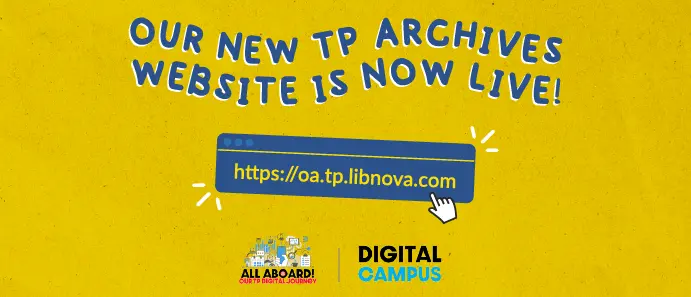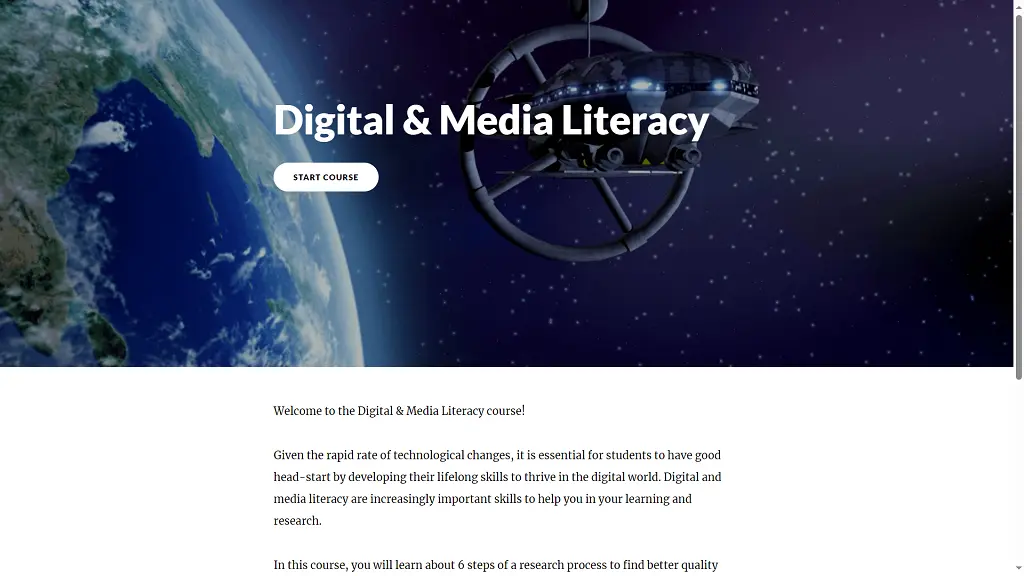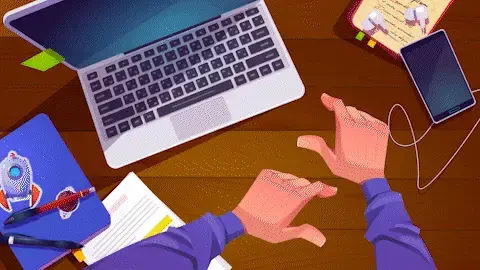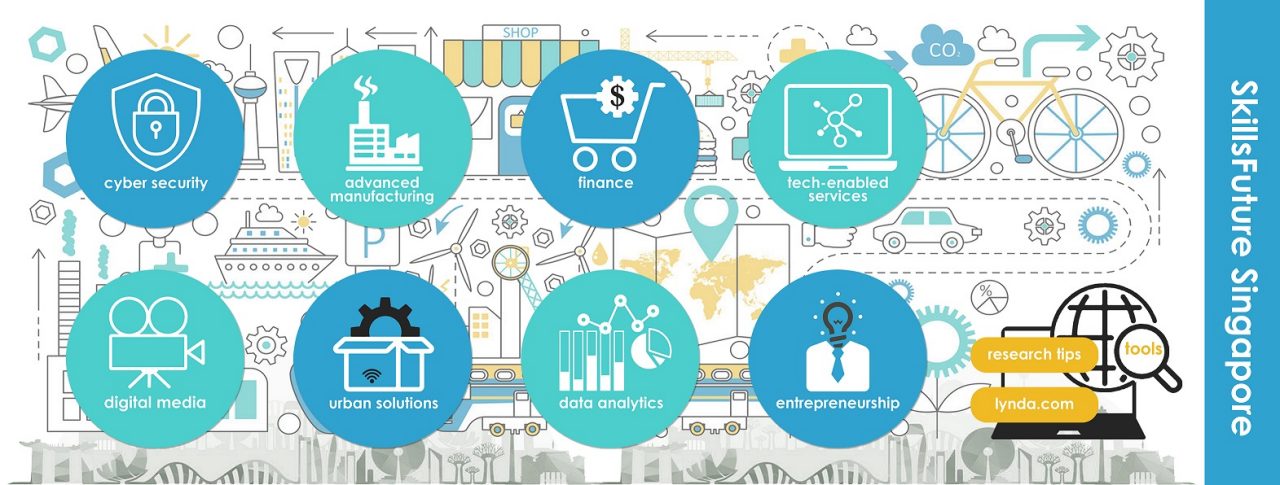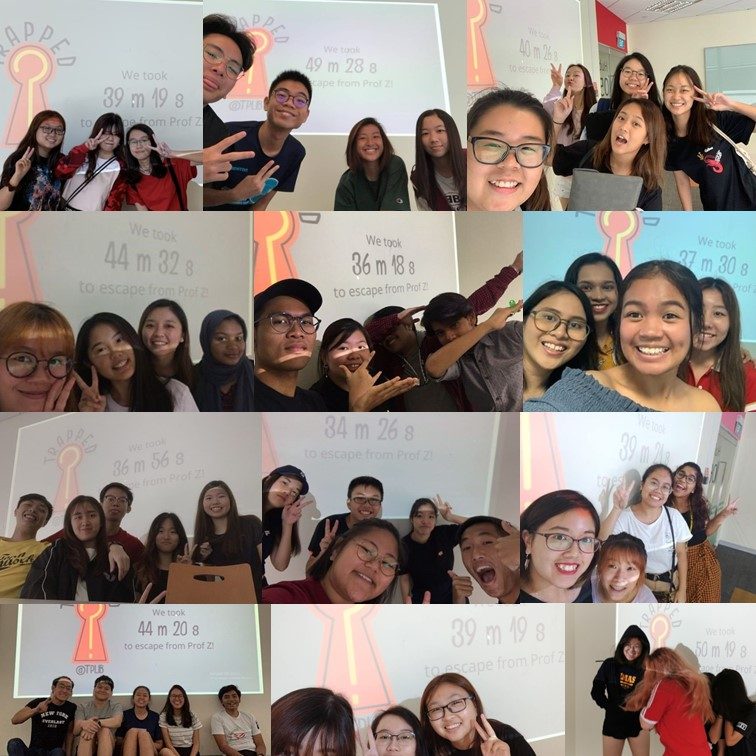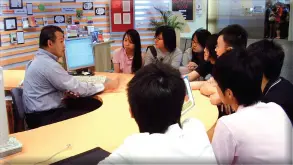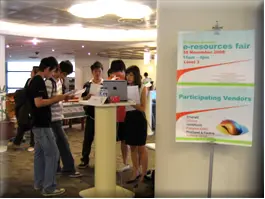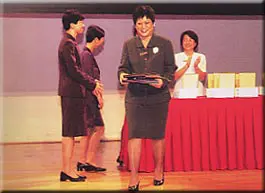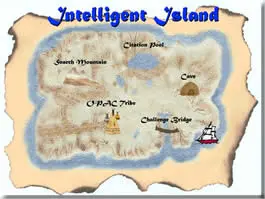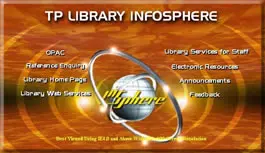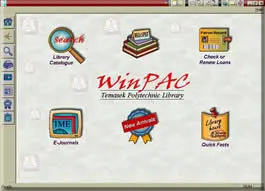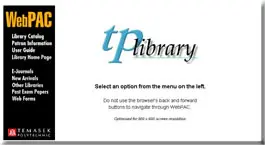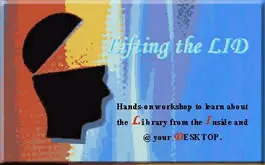In September 2022, the tender for the first-ever common Joint-Polytechnic Library Services Platform (LSP) and Resource Discovery System (RDS) was successfully awarded. The main aim of this collaborative effort was to enhance user experience by providing access to a wider pool of resources through a unified discovery system. A project management group was formed, comprising staff from NP, NYP, SP, and TP Libraries, with TP Library taking on the role of Project Coordinator.
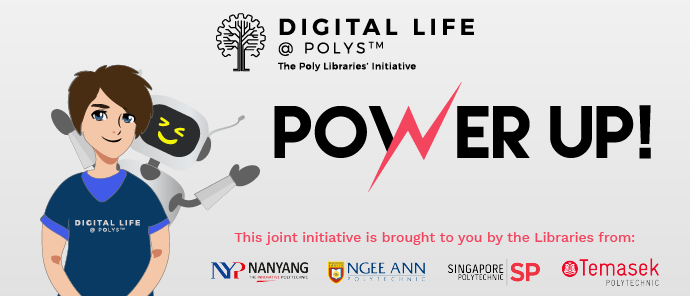
From 19 April to 21 May 2021, the Joint-Polytechnic Libraries (JPL) launched the inaugural Power Up! event to promote digital and media literacy as well as showcase the resources, services and facilities of the libraries. A series of virtual talks were organised to boost the learning power of students and staff to help them stay ahead in their studies and career.
To engage our students, the library also partnered with TP’s Corporate Communications Department and student ambassadors to host a virtual tour and Q&A session via Instagram Live.
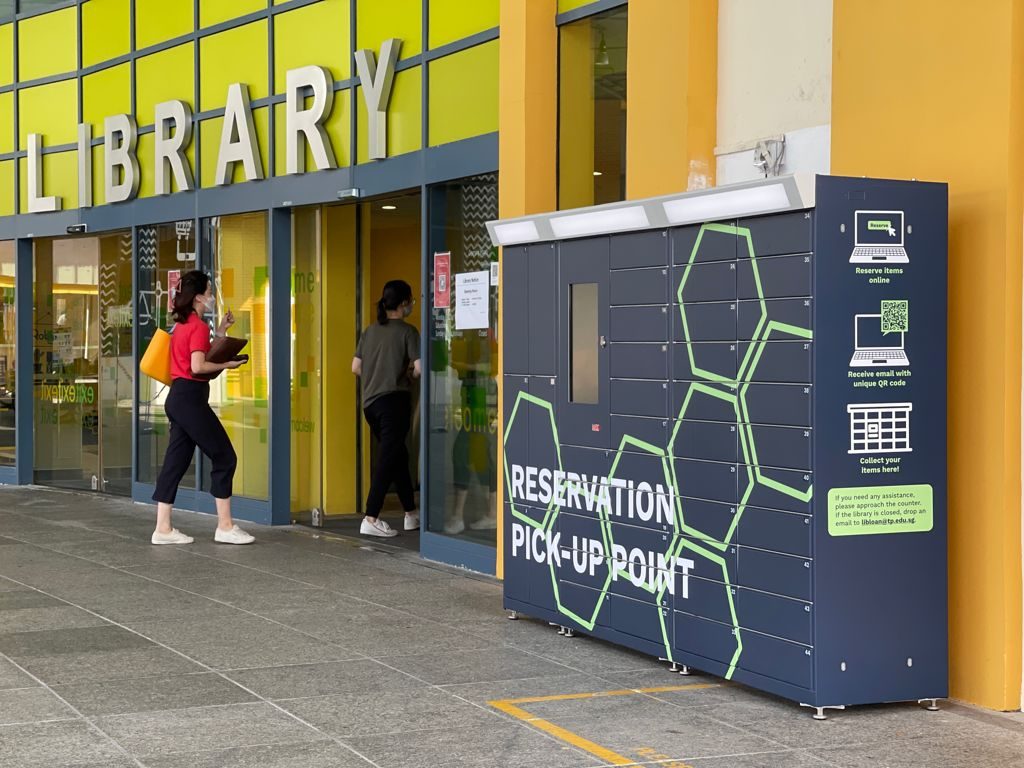
As of May 2021, patrons can collect reserved items at any time using the Reservation Pick-Up Locker which is located outside the library. Patrons scan a QR code sent to their email to collect the reserved items, which are automatically checked out to them upon collection. This service provides convenience to patrons and reduces in-person contact between library staff and patrons during the COVID-19 period.
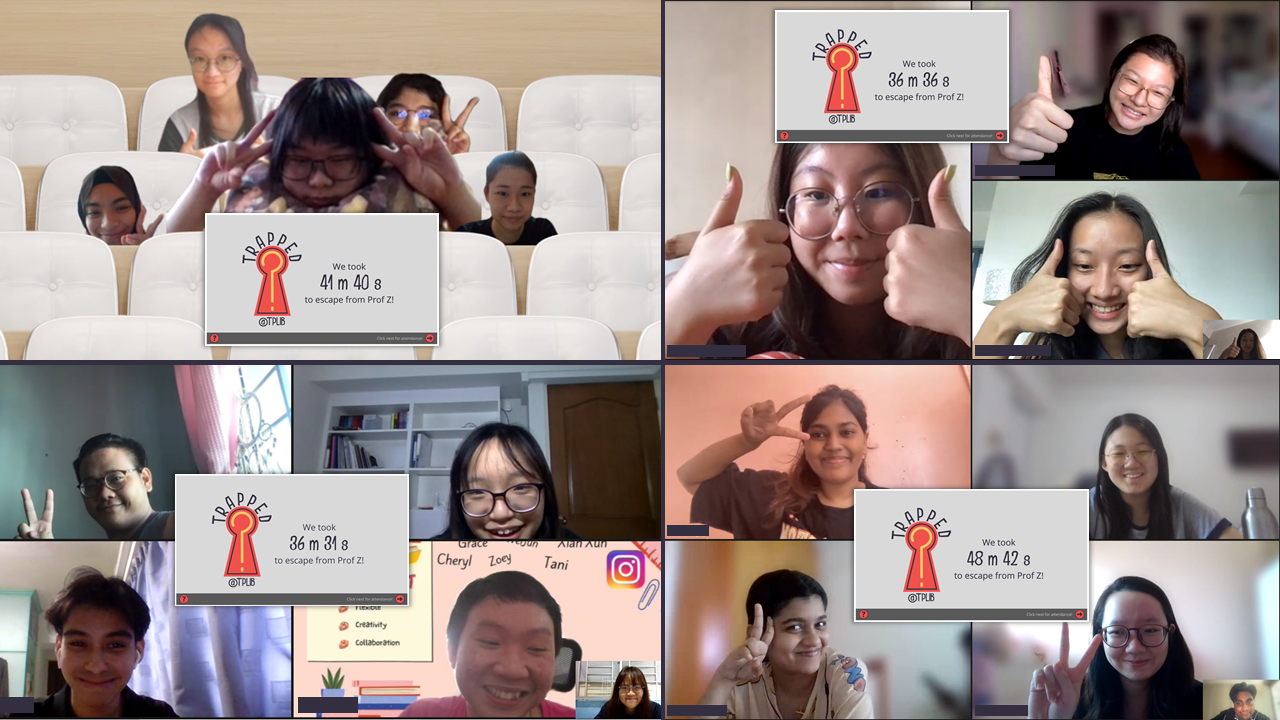
During Flex week in July, some freshmen from the School of Applied Science joined a Virtual Learning Journey. Students were grouped into small teams to solve various puzzles and escape from being trapped in virtual rooms, while learning about the library’s resources and services. The virtual learning journey enabled the library to host many groups of students concurrently while reducing staff manpower at the same time.
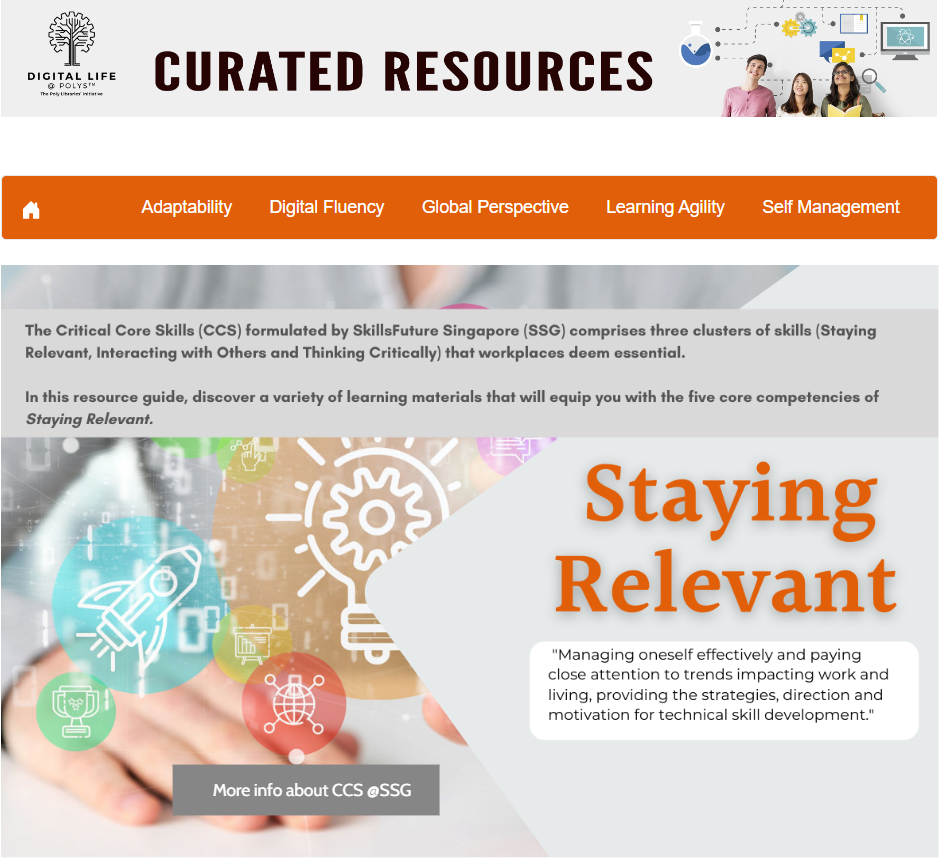
As part of the Joint-Polytechnic Libraries (JPL) Curation and Resource Development, the libraries jointly curated a series of resource guides ranging from Our Core Competency (OCC) for staff to Critical Core Skills (CCS) for students. The collaboration resulted in shorter turnaround time to publication and a wider range of guides for the polytechnic communities. The guides can be accessed from https://tp.libguides.com/jpl.
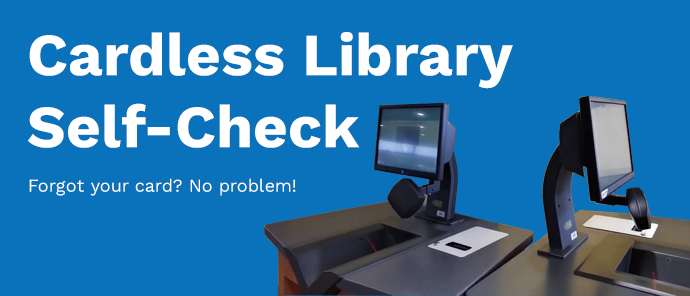
With effect from 4 October, library patrons no longer need to scan their cards when borrowing items using the self-check machines. Instead, patrons can just key in their userid and PIN. Cardless borrowing has enhanced patron experience through greater convenience.
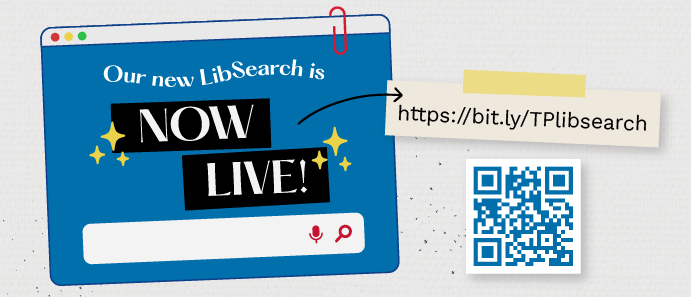
LibSearch, a cloud-based solution, was launched on 1 December 2021. This improved one-stop search platform automatically renews books and journal loans three days before their due date. The Databases+ feature allows for full-text search of resources that are either subscribed by the library or available as open access. LibSearch is a part of the Library Services Platform (LSP) and Resource Discovery System (RDS) joint project between the TP and Singapore Polytechnic libraries.
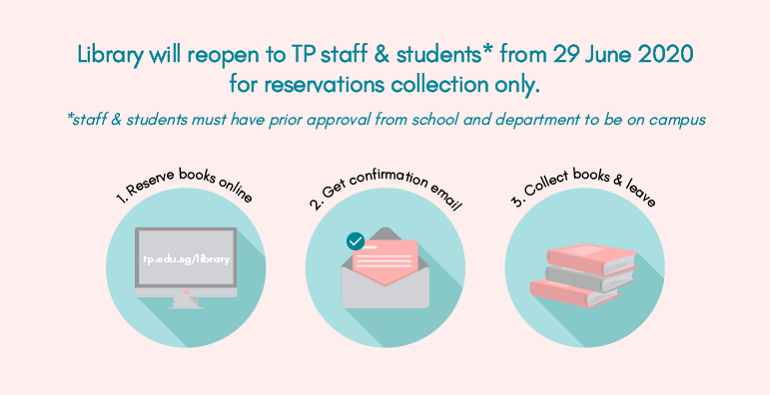
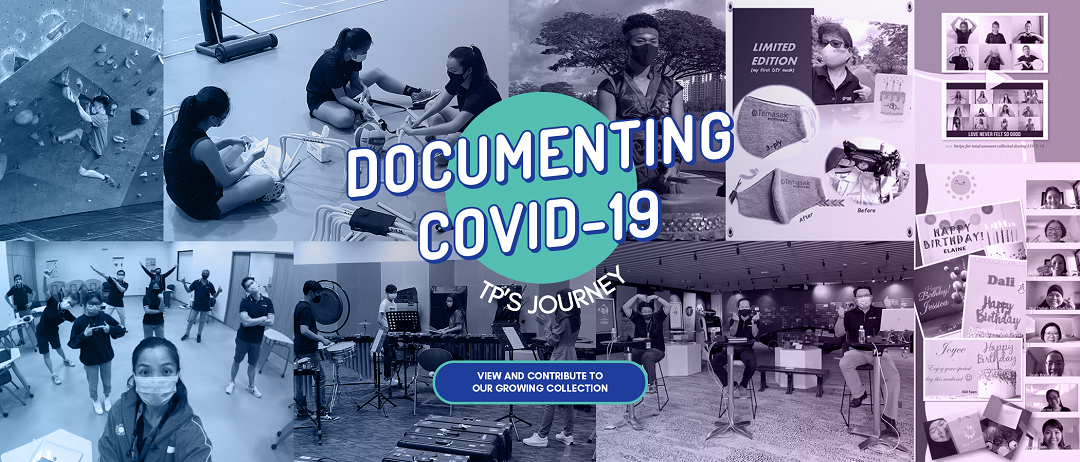
The COVID-19 pandemic led to the suspension of in-person library services during the Circuit Breaker period that began in April 2020. To meet the needs of students and staff who were learning and working from home, the library expanded its e-resources by procuring additional licenses and concurrent accesses. With the gradual reopening of the campus, the library worked with TP’s Enterprise Risk Management (ERM) to implement safe distancing measures.
The library also developed a TP Archives project—Documenting COVID-19: TP’s Journey. It contains write-ups and photos contributed by staff and students who shared about their lived experiences during the pandemic.
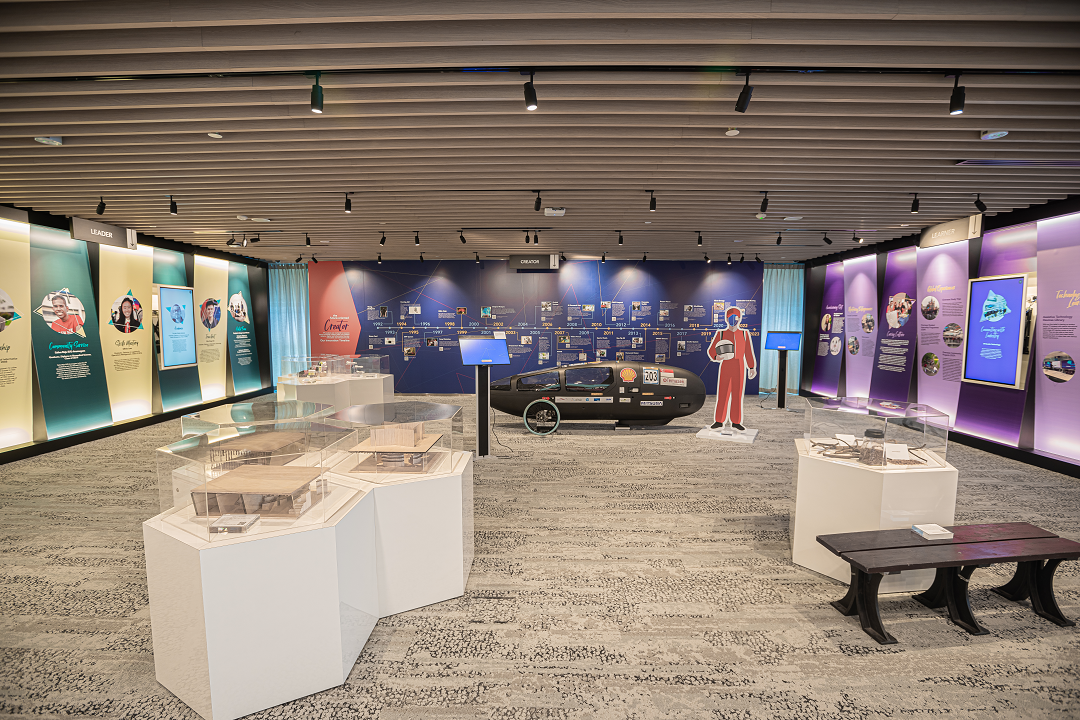
The Temasek Gallery was officially opened on 9 October 2020 by Dr Maliki Osman (Second Minister for Education and Foreign Affairs) and Ms Gan Siow Huang (Minister of State, Ministry of Education & Ministry of Manpower). Located on level nine of the library, the gallery showcases TP’s mission to nurture lifelong learners, future-oriented creators and values-centred leaders. Apart from featuring inspiring student leaders and award winners, the gallery and its Instagrammable Wall were conceived respectively by students from Diploma in Interior Architecture & Design as well as Diploma in Communication Design.
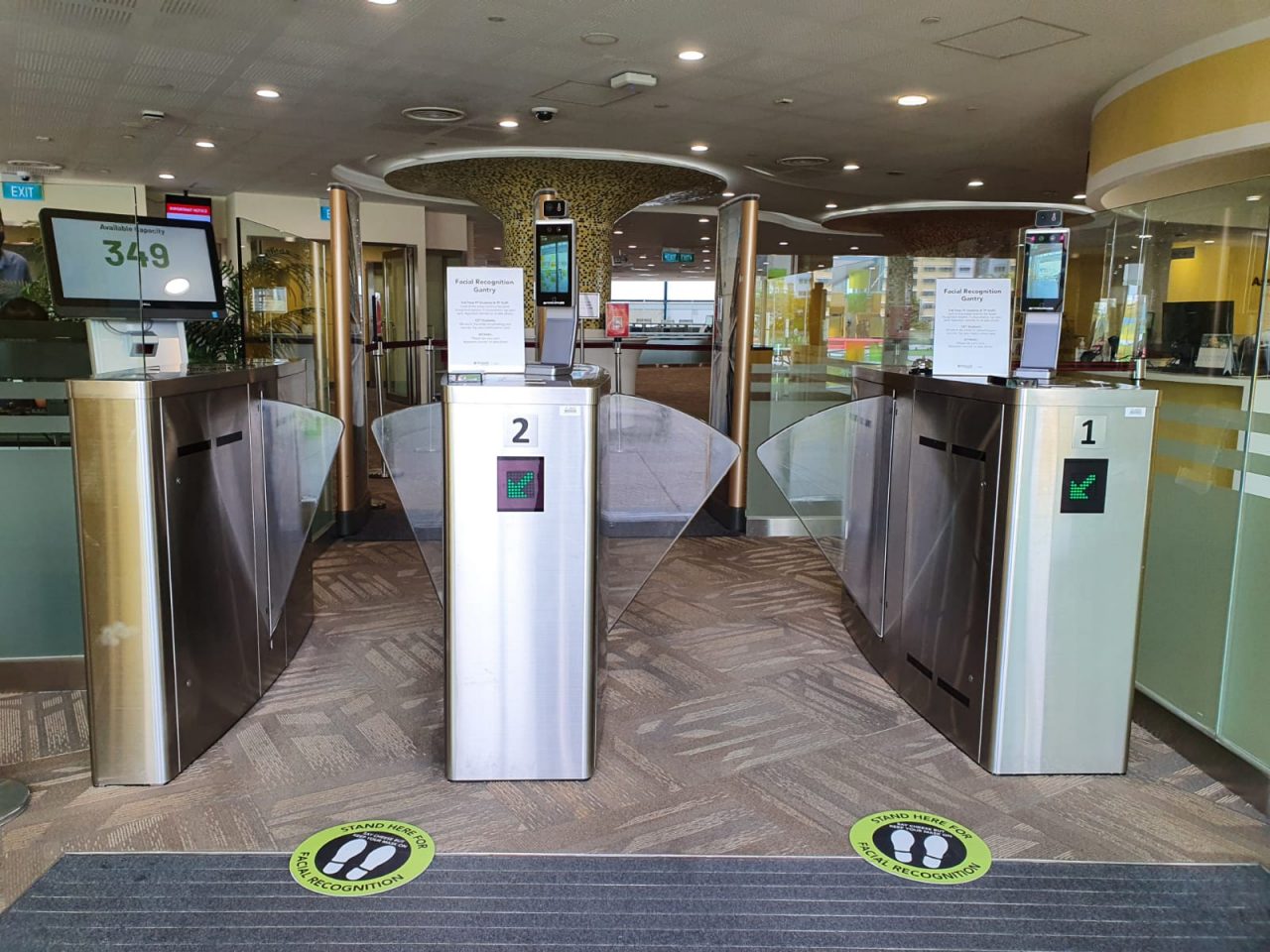
As a smart campus pilot project, the library has integrated Facial Recognition (FR) technology and temperature reading at its entrance and exit gates. Deployed from 19 November 2020, the system enables staff and students to scan their faces instead of cards to enter the library. It also checks patrons’ temperatures and the presence of face masks, and updates occupancy capacity in real time. The benefits of FR technology include increased staff productivity as well as greater convenience and safety for library patrons.
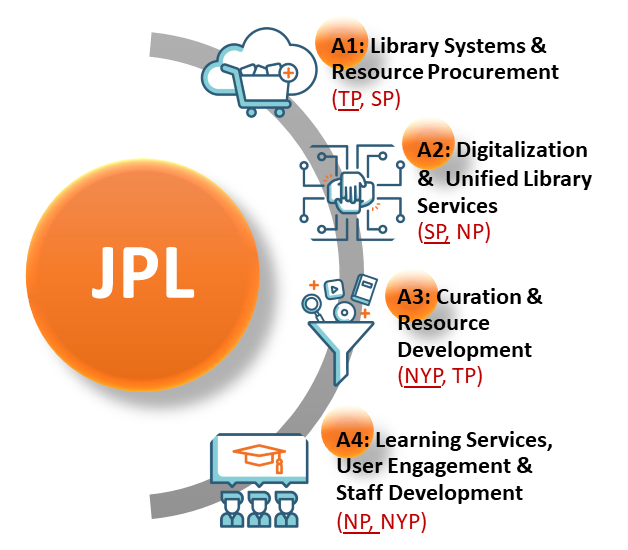
In July 2020, the four polytechnic principals endorsed the first ever Joint-Polytechnic Libraries (JPL) Collaboration, comprising libraries from Nanyang Polytechnic, Ngee Ann Polytechnic, Singapore Polytechnic and Temasek Polytechnic. The JPL seeks to achieve key objectives of optimising resources and cost, enhancing patron experience, and strengthening staff professional development. The areas of collaboration are: Library Systems & Resource Procurement, Digitalisation and Unified Library Services, Curation & Resource Development, as well as Learning Services, User Engagement & Staff Development.

Robbie the inventory robot started making the Library its home and workplace in May. The hardworking robot scans the RFID tags of tens of thousands of books in a day and updates their location information in LibSearch. It can navigate levels 6-8 autonomously, detect missing and misshelved books, avoid obstacles in its path and charge itself when its battery level is low. Robbie’s capabilities and productivity gains were showcased at the Polys, ITE and SSG Digitalisation Seminar & Exhibition 2018.
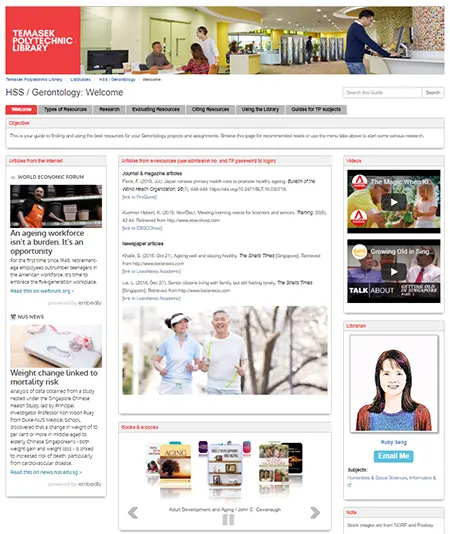
In August 2018, the Library started subscribing to LibGuides, a content management and curation platform. Our librarians have created various guides that serve as comprehensive resources for research. LibGuides can also be used as a collaborative tool with lecturers and departments.
Utilization of Robotic Process Automation (RPA) started in August, as the Library identified some repetitive and labour-intensive tasks and developed three solutions which are currently being put to use. For example, checking the validity of URLs for e-books is now much faster and no longer requires manpower.
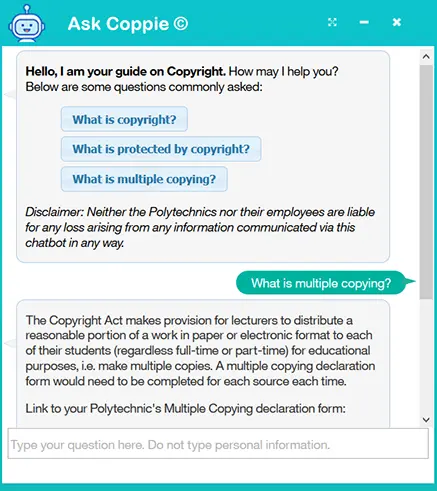
The Library—supported by TP’s IT Service department—led a team of representatives from the five Polytechnics’ Copyright Committees to create a common copyright chatbot. Coppie (the first joint-poly chatbot initiative), was launched in November 2018 and serves as a virtual Copyright Advisor for users from all the polytechnics.
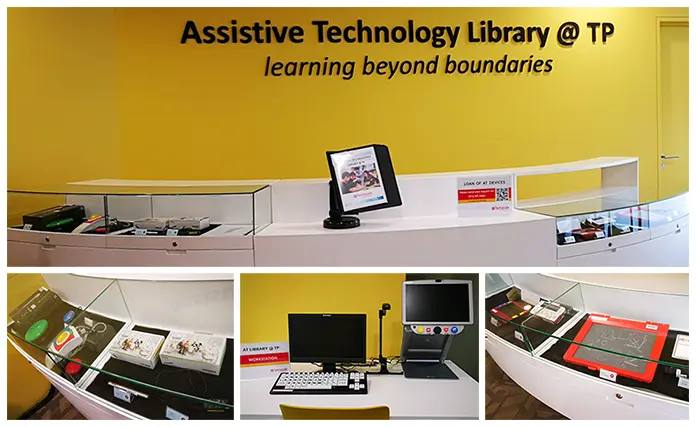
13 November saw the launch of Assistive Technology Library, housed within TP Library itself. A collaboration between TP, SPD and Info-communications Media Development Authority (IMDA) makes it possible for our special educational needs students to borrow a range of aids and devices to support their learning needs.
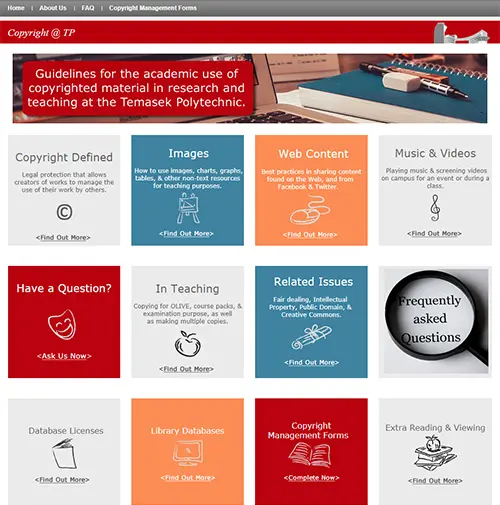
The Library took over as custodian of copyright matters for TP in late 2016. In Feb 2017, the Copyright Portal was launched and made accessible to all TP staff. Sections include images, web content, copyright management forms (which are now managed by the Library), frequently asked questions, terms and conditions of use of electronic resources, as well as access to the Copyright Management Group representatives who will advise staff on copyright compliance processes.
A series of nine curated country guides was introduced on 8 September, with more guides being constantly added. Drawing from the Library’s collection of print and online resources, these curated guides provide information from credible sources to support preparation for overseas internship, study trips and community projects. The mobile-friendly guides contain country facts, safety tips, etiquette and other useful information, such as interviews with our international students and comments from students who had gone for overseas trips.

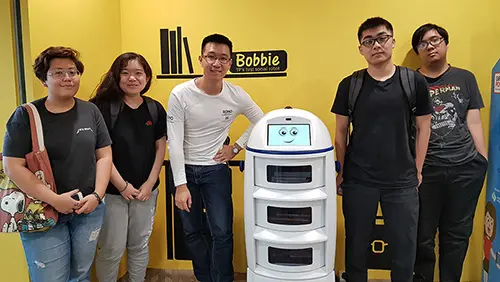
Bobbie the social robot started working and making friends in October. Currently, Bobbie can greet visitors, display notices and messages, conduct polls and promote resources. Bobbie also helps to publicise the exhibitions and events held within the Library. Other tasks for Bobbie are being explored, such as ushering guests to the different levels.
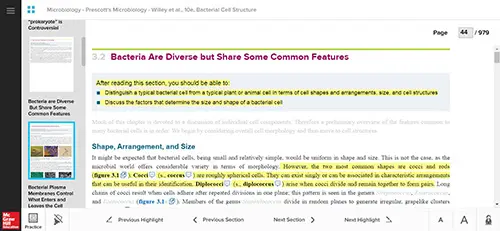
The Library piloted the acquisition and usage of smart textbooks for students in October 2017. Equipped with adaptive learning technology, smart textbooks can learn and track students’ understanding of content through interactive quizzes selected from question banks by lecturers. Analytics captured enable lecturers to adjust their teaching strategies based on student’s performance in the quizzes.
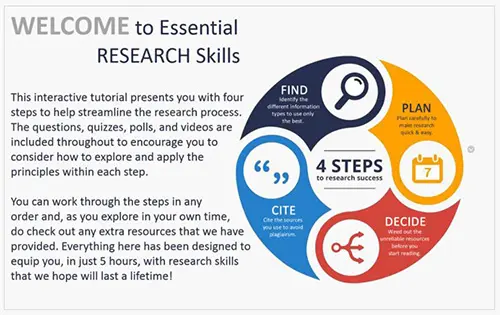
Launched on October 23, the library's five-hour, self-directed PolyMall module on Essential Research Skills is open for enrolment to staff and students across the polytechnics. The module was also offered to all level 1 students from the School of Applied Sciences as part of their communication skills subject.
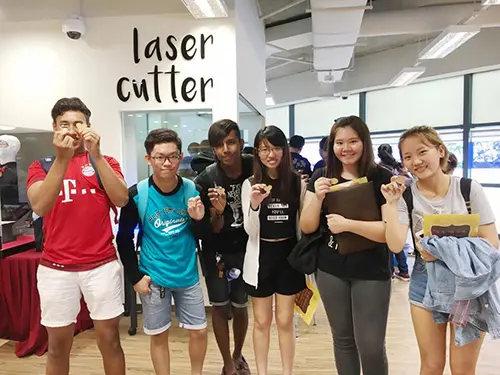
Makerspace@TP was launched on 4 January to encourage a hands-on and DIY culture within the TP community. In 2016, the maker coaches offered weekly clinic sessions and 198 workshops on topics such as 3D printing, laser cutting, coding, programming, woodwork, leather crafting, linocut printing, calligraphy, cartoon drawing, jewellery design and silk screen printing.
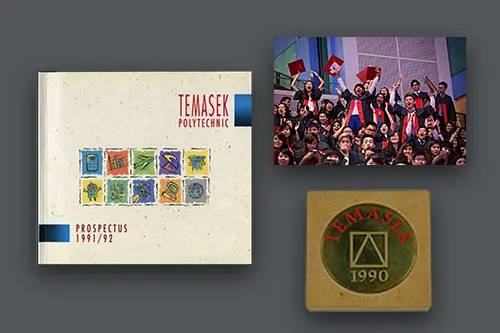
TP Archives is a central repository containing materials that chronicle the beginning, growth and development of TP. The collection contains ephemera, memorabilia, publications, photographs, and videos, and was launched in February and made accessible through LIBsearch.
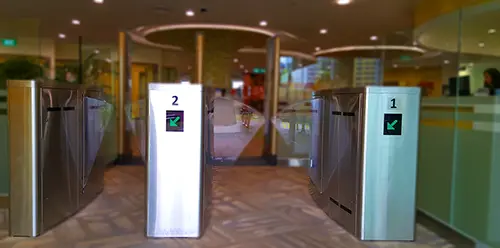
Since April, the Library has been analysing visitorship data using Excel Business Intelligence (BI). The data is collected from the gantries installed at both the entrance and exit. This marks the beginning of the Library’s utilisation of data analytics to provide better services for its users.
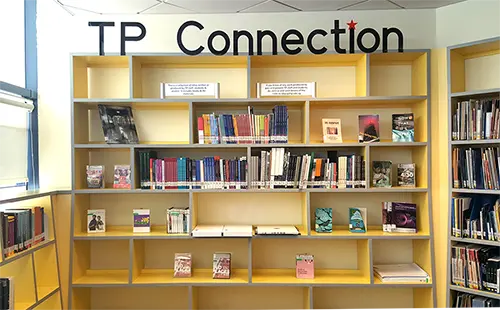
A new collection that was started in July, TP Connection showcases works produced or published by TP staff, students and alumni. These works can be in book or audio-visual format, and range from comics to non-fiction titles. The Library is building on this collection by identifying works that are currently in our collection, as well as sourcing for new titles that we do not have.
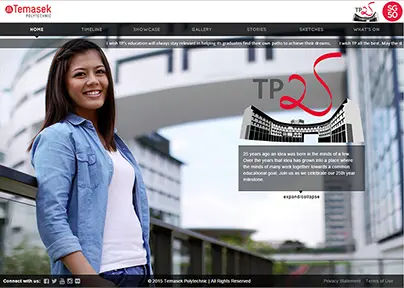
To commemorate the Temasek Polytechnic's 25th anniversary, a cross-departmental team led by Library created a TP25 microsite. It consisted of an interactive timeline; a showcase of TP’s educational and research excellence; a photograph and video gallery; as well as memories and sketches of TP. The microsite was launched on 29 April by Emeritus Senior Minister Goh Chok Tong, during the TP25 opening event.
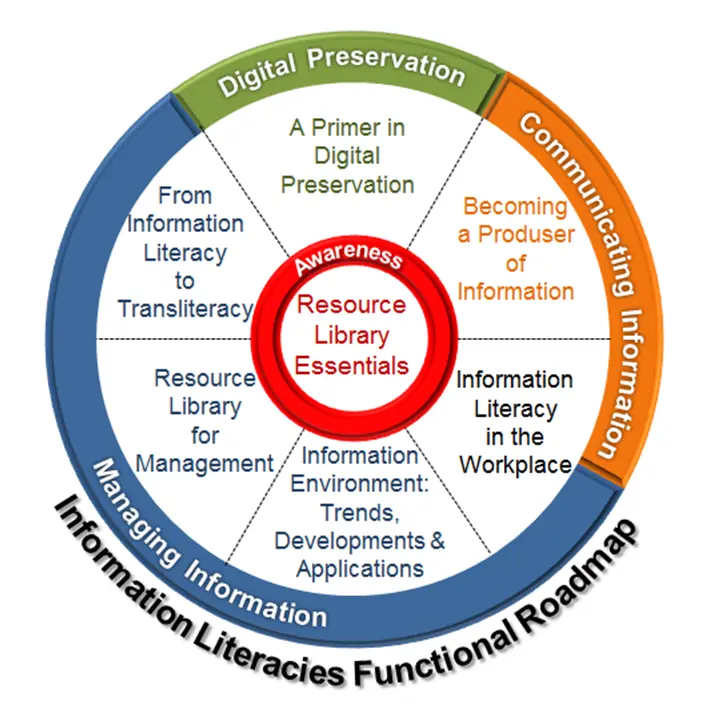
In FY2015, the Library partnered the Staff Capability Department (SCD) to roll out the Information Literacy Functional Roadmap. The roadmap comprises a series of workshops to equip TP staff with knowledge and skills to manage and communicate information effectively. Four programmes were implemented in FY2015 and another two programmes will be rolled out in FY2016.
The renovation project began with the award of tender in March 2015 and was completed in nine months without need for closure of the library. Renovation was done in phases with closure of a few floors in each phase and progressive re-opening of the renovated floors. With the renovation, the library’s facilities and collections were streamlined and re-purposed to create new learning and activity spaces such as Makerspace, Collaboration Space, Quiet Zone and Learning Pods to provide a more dynamic learning environment for library users.
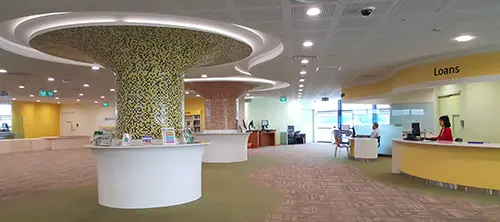
On 10 February, a new service was introduced to support students during their study week and examination period. The eExam Paper Retrieval Service let students request for past-year exam papers through email or a request form at the Customer Service Counter. Students will receive their requested exam papers through email within an hour (or the next working day for requests submitted after office hours).
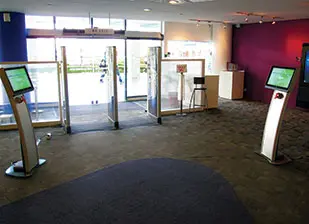
New patron tracker kiosks with touchscreens were deployed on 11 February. The barcode scanners in the new kiosks are positioned at a good height, making the scanning of cards easier and speedier.
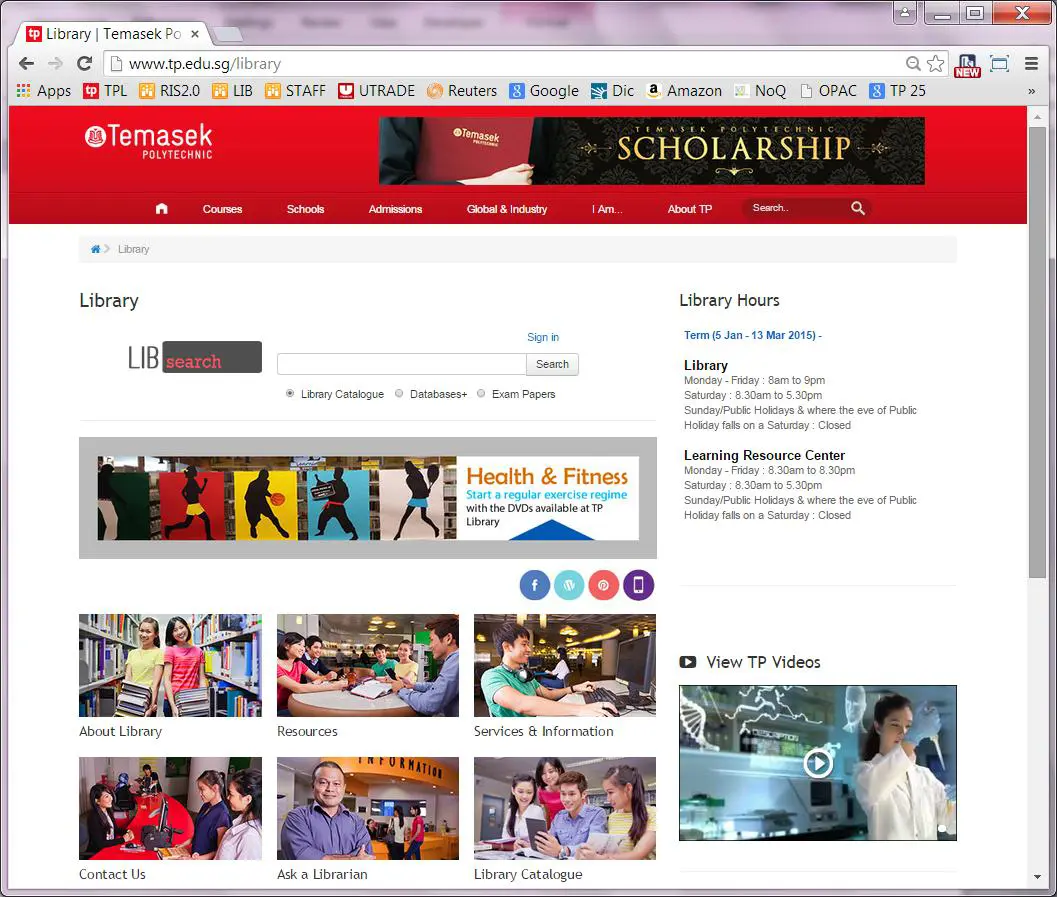
On 30 July, the Library webpages had a makeover. The new design of the Library webpages includes revamped e-forms and is in line with the rest of Temasek Polytechnic website.
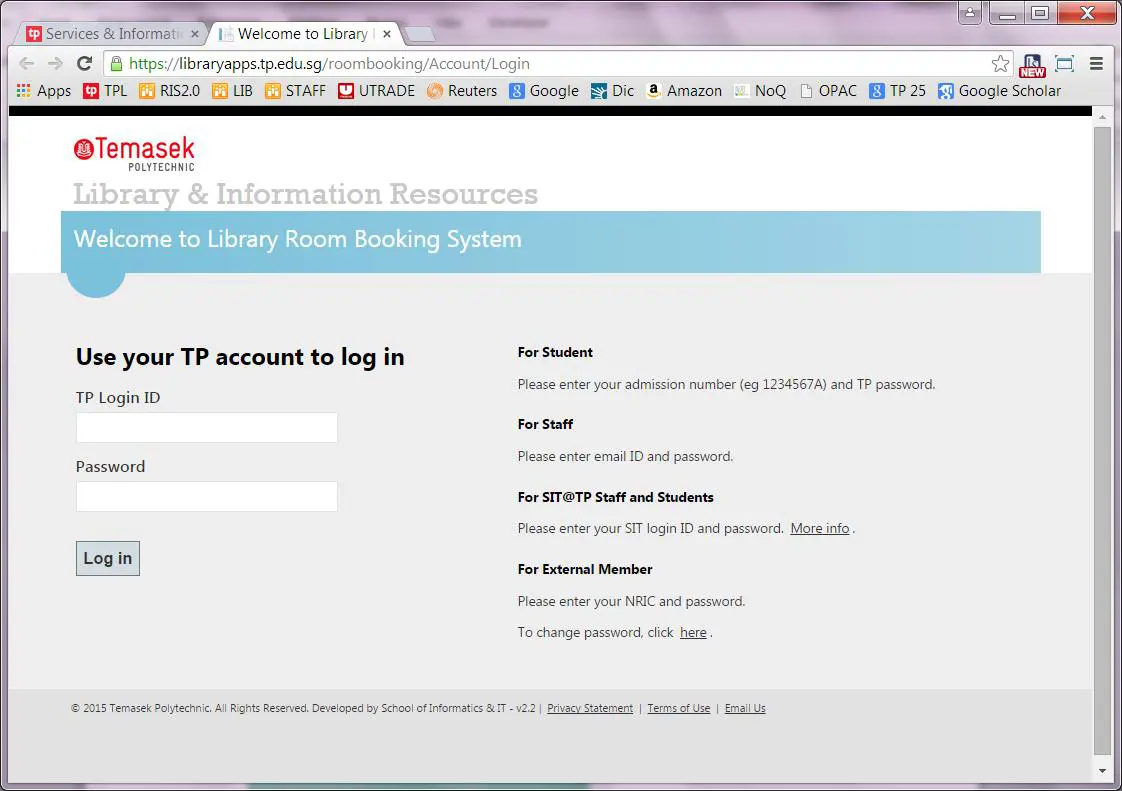
A new dedicated room booking system was launched in May. Based on specifications drawn up by the Library and built by the School of Information and Informatics, the new system allows users to book project and study rooms for each current week.
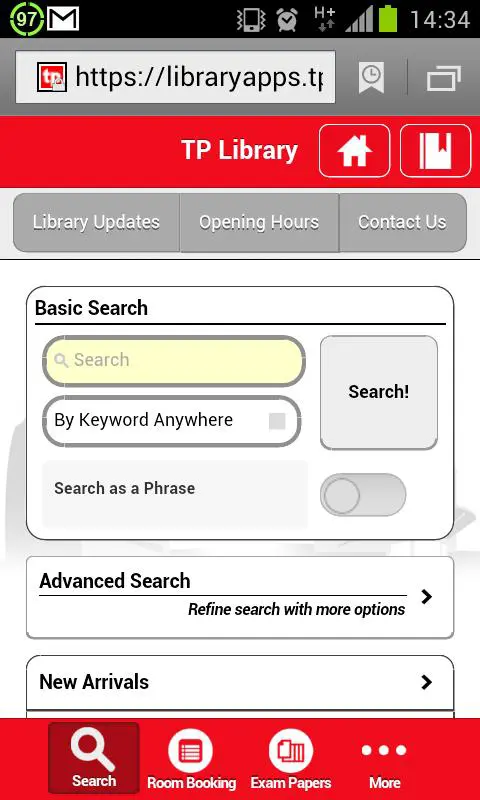
On 30 December, the Library Mobile Web (HTML5) App was released. This new Library app is interoperable across different devices and will replace the native iOS and Android Library apps.
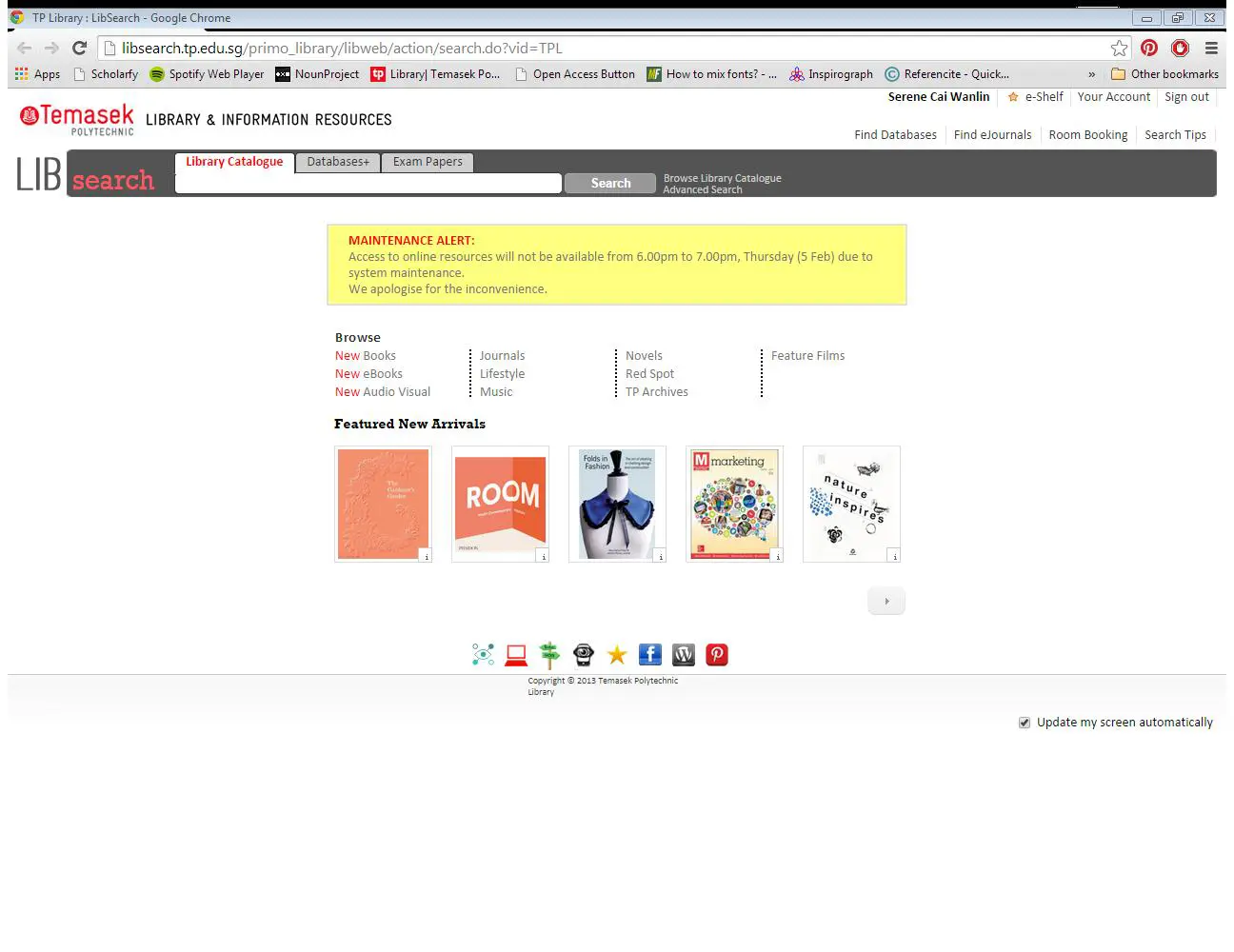
LIBsearch, a new search and discovery system for library resources, was launched on 1st April 2013. LIBsearch simplifies and streamlines the search process while facilitating the discovery of related materials.
Starting in April, in collaboration with the School of Informatics and Information Technology (IIT), the Library is able to provide helpdesk support for public PCs in the Library. Users can now approach the IT Service Management (ITSM) helpdesk at the counter at level 2 of the Library or call the ITSM Centre from the telephones provided at various points in the Library.
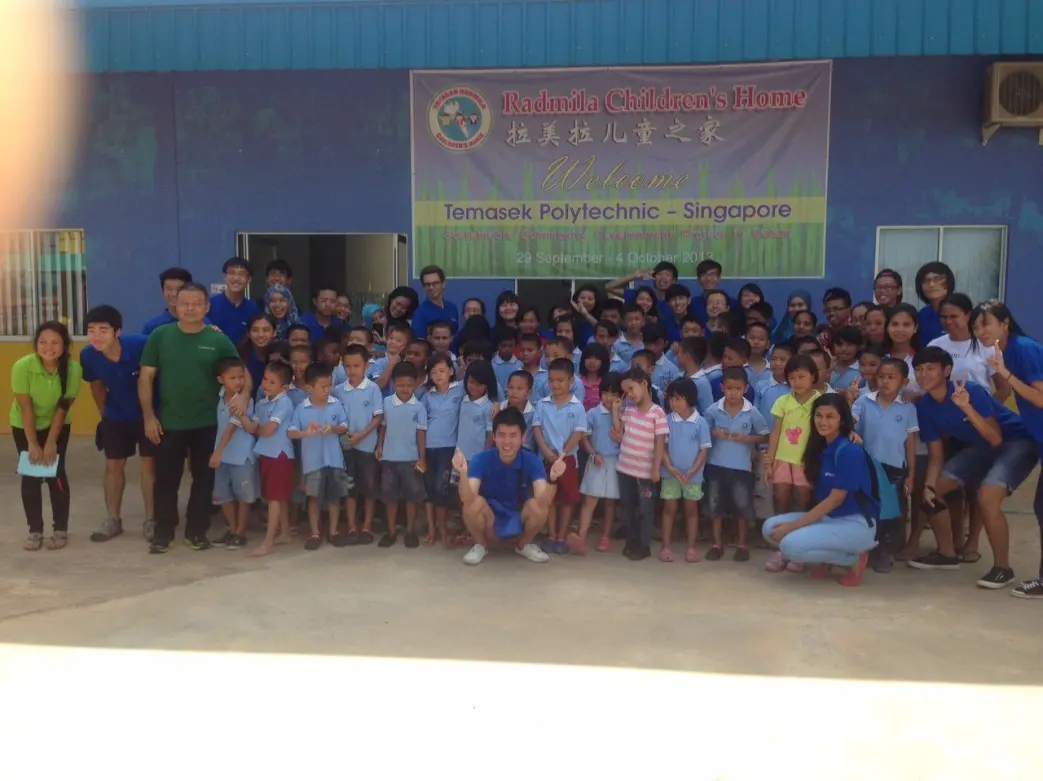
As part of a Centre for TransCultural Studies (CTS) subject, Sustainable Community Development, the Library, in collaboration with CTS staff and students, helped to set up a small library in Yayasan Radmila Children’s Home in Batam, Indonesia. Two librarians were actively involved in every stage of the project development, from on-site assessment to the eventual opening of the library.
Starting from October 2013, students and staff can subscribe to Electronic AV Alerts service which will keep subscribers abreast of new arrivals in the audio-visual collections in the Learning Resource Centre (LRC).
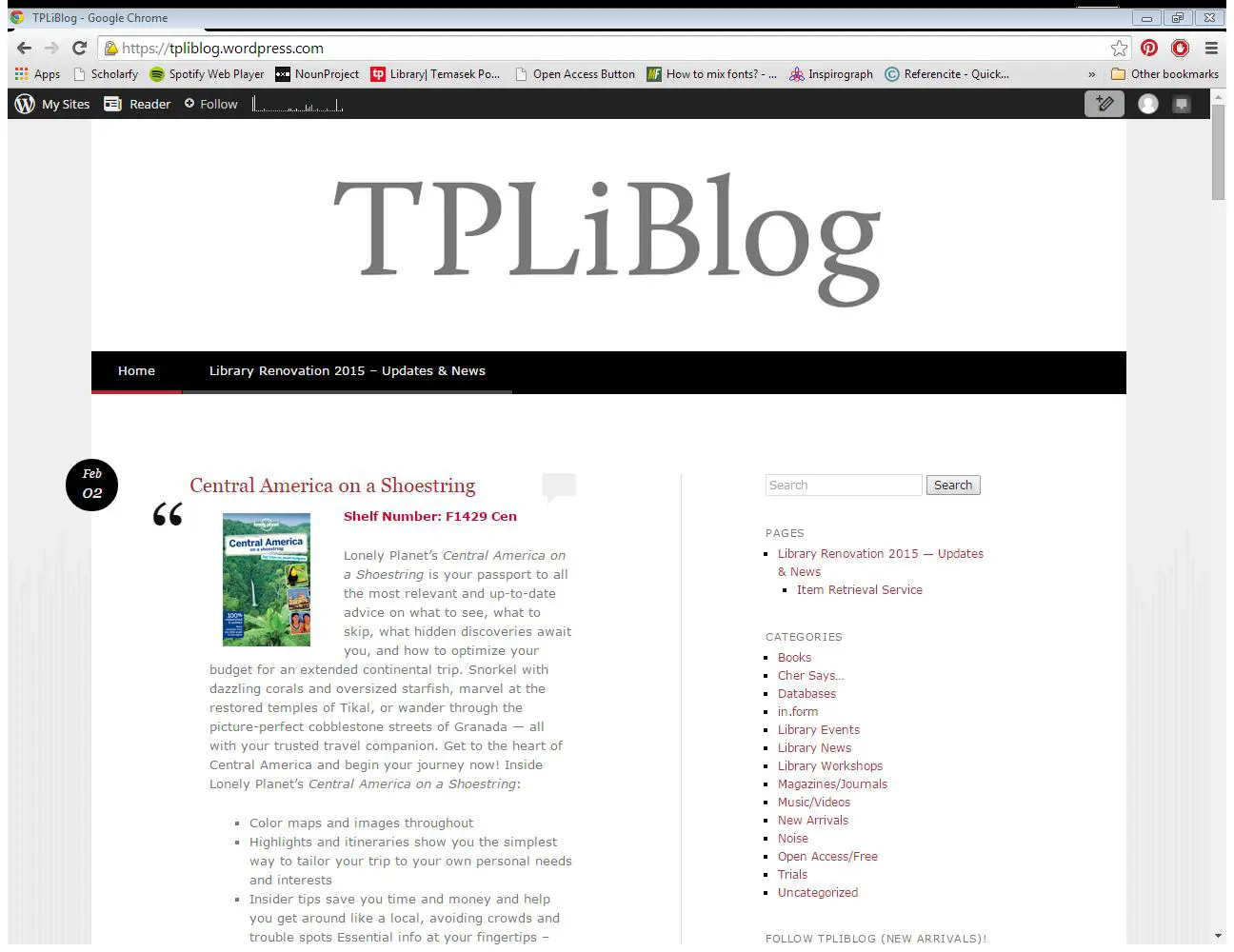
TPLiBlog was moved from Blogger to WordPress in December.
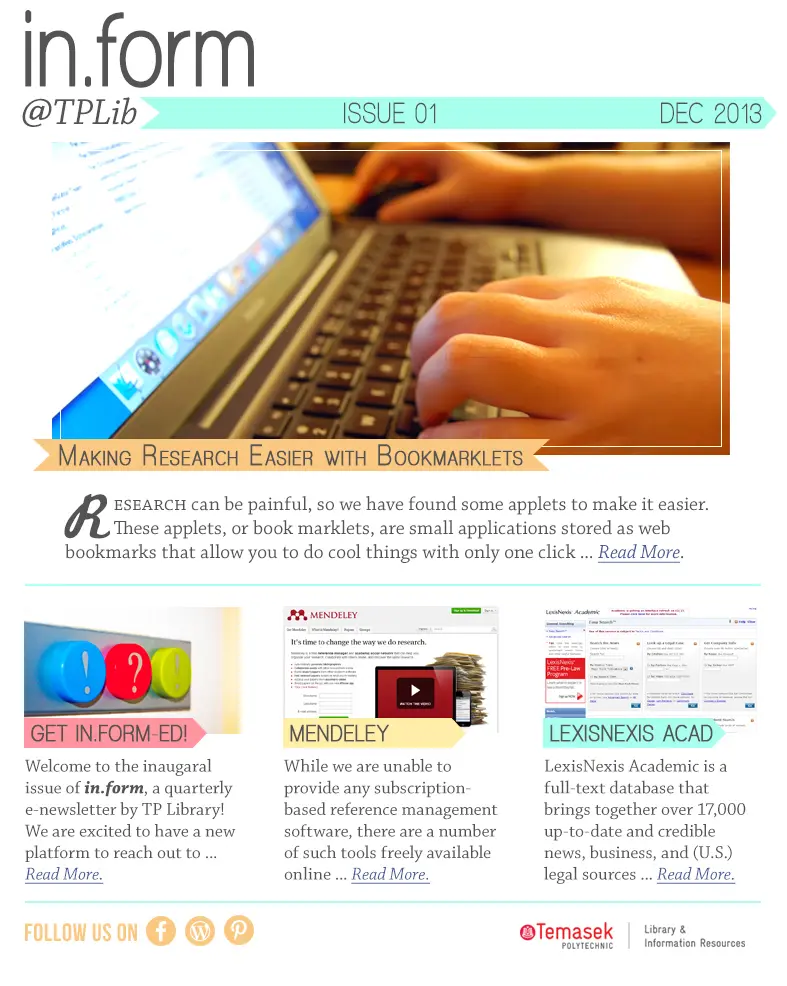
in.form, a quarterly e-newsletter for TP staff, was launched in December and is wholly hosted on TPLiBlog.
The Item Retrieval Service was extended to all TP staff on 1st March 2012.
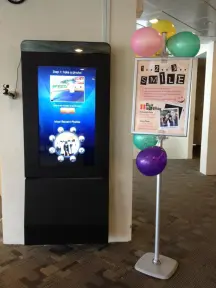
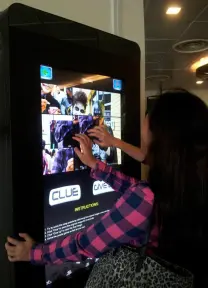
An interactive kiosk was introduced in the Library. It started off as a photo booth, allowing photos taken at the kiosk to be automatically uploaded to the Library’s Facebook wall. More content were subsequently developed and added to the kiosk including a Swap Puzzle Game.
The Library system, Aleph from ExLibris, was upgraded from version 18 to version 20 in April 2012.
A new Tablet Area equipped with Android and iPad tablets was introduced in March 2012. Free “infotainment” apps were installed in the tablets for our Library patrons.
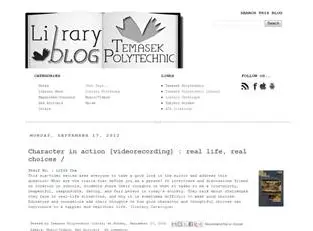
The Library blog was revamped and released in September 2012.
Improvements to printing services were introduced in the Library. Wireless printing service and a standalone printing station were introduced in May and July 2012 respectively.
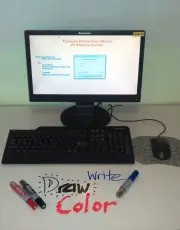
A new Shared PCs room equipped with PCs, and writable tables and walls was introduced in October 2012 in the Library to better accommodate the needs of students’ group project work and discussions.
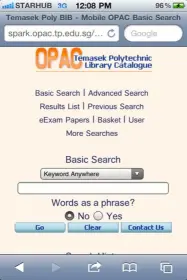
Mobile OPAC, the mobile version of Library Catalogue, was launched on 5th January 2011. It has most of the functions of Web OPAC but with a simpler interface suitable for use on mobile devices.
109 Graduation videos from year 2000 onwards were converted from VHS to DVD format in January 2011.
Library facilities and services were extended to Singapore Institute of Technology (SIT) staff and students in March 2011.
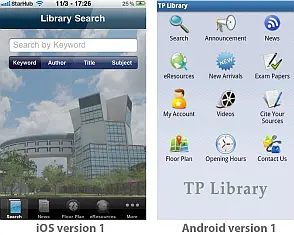
The TP Library Mobile App version 1.0 was developed for the iOS platform and released in April 2011. It was developed collaboratively by the Library and a group of students and staff from School of IIT, allowing patrons to search the Library collection, access research databases, check Library opening hours, use the interactive floor plan of the 11-storey Library building to help them locate resources and services, contact the Library, and find out the latest events and activities at the Library. A version for the Android platform was also subsequently released in October 2011.
- The Library website was revamped and went live on 15 September 2011. The new website has four main sections: Home, Resources, Services & Information, and News & Events.
- The Library OPAC was revamped and launched in April 2011. The new interface has a single search box and quick access to item availability status, which vastly improved user experience.
- A new Item Retrieval Service was introduced for part-time students. The new service enables patrons to reserve up to 3 items at one time for items with ‘available’ status and collect them from the Customer Service Counter.
- Automated confirmation emails for items returned at the Automated Return Kiosk (ARK) was introduced in July 2011, and receipt printing at ARK was subsequently disabled in September 2011 as a green effort to save paper.
- TP Library embarked on Demand-driven acquisitions (DDA) of ebooks on October 2011. Over 10,000 titles were loaded into the Library Catalogue, giving patrons immediate access without need to purchase the titles first.
- Conducted first online poll via Poll Everywhere in October 2011, on the popularity of the Library’s Android and iOS mobile apps. A second online poll was also conducted to find out patrons’ preferred social media tools.

A new Library Orientation video was produced in collaboration with Corporate Communications Department in February. The objective of this video is to reach out to our users and give them an overview of the excellent resources, facilities and services provided by the Library.
- Introduction of Library Confirmation e-mails on 1st March to all patrons who return library materials through the Automated Return Kiosk (ARK) and the manual return bin.
- Library acquired the Aleph Digital Asset Management (ADAM) module to replace the Digital Media Repository (DMR). The ADAM is a new integrated system and since 15 March, students and staff can conveniently access TP archives (such as past examination papers, images, digitized artifacts and more) from the Library online catalogue instead of a separate system.
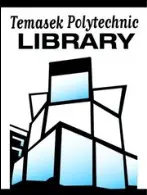
Launch of Library’s Facebook in September to tap on social media to engage and promote awareness of library services amongst our users. A profile picture for the Library’s Facebook page was designed and adopted.
- New LCD TVs and DVD players were set up in 38 viewing carrels in the Learning Resource Centre. Of these, 8 were equipped with 2-way audio splitter which allows 2 patrons to view the same show together. 2 viewing carrels were equipped with CRT TVs and VHS players to support the use of video cassette tapes.
- Library introduced the complimentary TP Retiree Membership to ex-full-time Temasek Polytechnic staff who has served TP for 10 continuous years prior to retirement. This new membership category is an affirmation of TP’s appreciation for retired staff as well as to maintain ties with our retirees.
- The Library SMS service, first introduced in June 2009 to full time students, was extended to part time students in September this year.
- Library opening hours extended by half an hour, from 8:00am to 9:00pm, Mondays to Fridays during term time, to cater to the needs of staff and students.
- Commemoration of the 10th anniversary of Lee Kuan Yew’s first memoirs with a month-long exhibition on Lee Kuan Yew and the history of Singapore; a pictorial exhibition including the video screenings “Success Stories: Lee Kuan Yew” and “History of Singapore”; a book display focussing on Lee Kuan Yew and Singapore’s history; and a mini-talk session on “Singapore early days – what my little eyes saw". A collaboration between the National Education Committee and Library.
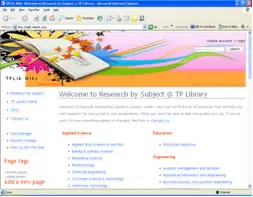
Launch of the Subject Guide Wiki in April 2008 to help students with their search for information. Guides were arranged according to each diploma at TP.
- Participation in the LAS Conference “Innovate to Serve” in May 2008 with one paper presentation by Ms Debby Wegener and a poster session by Ms Ong Peik Keng.
- Completion of the anti-plagiarism video, a collaborative effort between DESIGN students and library staff. The video highlighted the perils of plagiarism, in particular, within the academic setting.
- Implementation of Electronic ordering via EDI in August. From Oct 2008. TP Library became the first polytechnic library to implement full electronic ordering and invoicing with a local vendor.
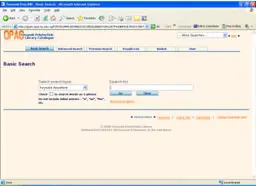
Successful upgrade to the ALEPH version v18 completed on 18 December 2008.

Issuing of Tote bags designed by library staff to promote reading and borrowing of Library books amongst staff and students. The tote bags came in red, black or white and had the taglines “Bag-a-book @ TP Library” and “Temasek Polytechnic” on different sides. So popular, the first batch of bags were taken up within a month. In total, over 2500 bags were issued.
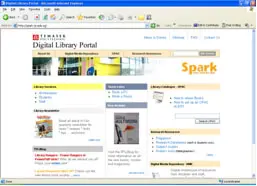
Successful migration of the Digital Library Portal to the Web Content Management (WCM) System at the end of December 2007. An effort to create a standardized corporate look across the TP portals.
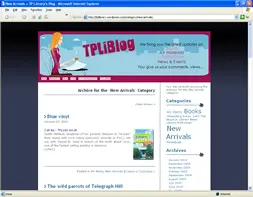
Introduction of the TPLiBlog in October; hosted by the free blog host Wordpress and covering the latest updates on books, AV materials, periodicals, as well as news and events.
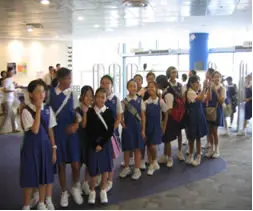
First ever Library Open House where TP Library joined more than 40 libraries during Singapore Library Week (1-9 November 2007) to celebrate the contributions of libraries and librarians. Library activities included blogging workshops, quizzes, vendor talks and more. More than 300 visitors participated in the event.
- Implementation in May 2006 of Electronic Billing Notices to library members for outstanding charges. Patrons without email addresses received hardcopy letters if their fines had accumulated to more than $1.
- Replacement in September 2006 of 124 units of the public PCs with aster CPUs (Intel 4, 3.0 GHz) with higher memory power (1.5 GB) to better prepare for the loading of advanced features.
- Configuration of ALEPH to enable the searching and display of records with Chinese characters in Web OPAC (now called the Library Catalogue) and ALEPH GUI client. This function included the cross searching of traditional and simplified Chinese characters in ALEPH.
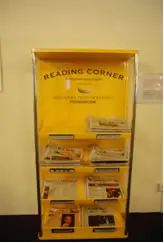
Launch of the Reading Corner in November 2006 to foster newspaper reading habits amongst the younger generation. The Reading Corner carried The Straits Times, The Business Times, Lianhe Zaobao, Berita Harian, Tamil Murasu, the International Herald Tribune and the Financial Times. An initiative sponsored by the Singapore Press Holdings (SPH) Foundation.
In April 2003, TP Library was approached to set up a Resource Centre to support the curricula and research needs of students and staff of the Tourism Academy@ Sentosa (TAS). [See TP Annual Report 2003-2004]
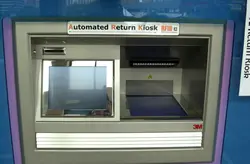
TAS Resource Centre became operational on 11 May 2005. The Resource Centre provided a book collection of about 8,000 volumes; AV resources such as CD-ROMs, DVDs and videocassettes; periodicals and online databases. It also offered loans (borrow, return, reservation, renewal and other membership privileges) and quick reference enquiry services, and facilities like OPAC (now called the Library Catalogue) stations, self-check stations, PC clusters and AV viewing stations.
Library Materials Management System (LMMS) was implemented using Radio Frequency Identification (RFID) technology. The new service was launched on 19 May 2005, two weeks ahead of project delivery schedule. Library core operations and services were simplified with automated check-ins and sorting of library materials, faster loan transactions and enhanced item management, stocktaking and tracking of of library resources with the use of handheld RFID readers.
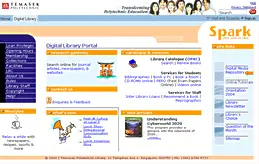
In January 2005, after a usability study and research into other library practices, it was decided that the TP Library portal would focus on services to Library patrons, rather than on physical facilities. The portal contents were revised and reorganized in keeping with TP’s web interface standards, and the new design was uploaded on 24 May 2005.
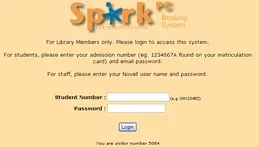
Upgrade of the PC Booking System in November, after being in operation since October 2003. The new version maintained the design and functionalities of the old system, so users did not need to relearn any new functionalities, while the standard TP single-sign-on was used to book and login to the Internet PCs.
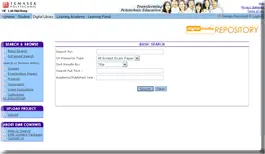
Launch of Digital Media Repository (DMR) in June, the final instalment of the DL systems project. The DMR was a digital storehouse facilitating knowledge sharing within the TP community by making available online TP publications, examination papers, student and staff projects, newsletters, videos and photographs.
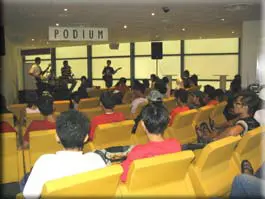
Debut of the Events@Podium in July to promote usage of the rich Library resources through varied, entertaining as well as informative programmes These included beat boxing, drama, a cappella and band performances at the Podium, and attracted sizeable crowds to the Lifestyle floor.
In November and December, the Library played host to two secondary school teachers, as part of TP’s participation in the MOE Teacher Work Attachment scheme to expose teachers to a broader range of work experiences.
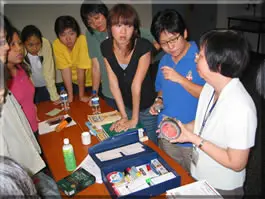
In December, the Library conducted cataloguing training to Girls' Brigade to prepare them for their impending trip to Cambodia, where they were to set up a library from scratch for the locals.
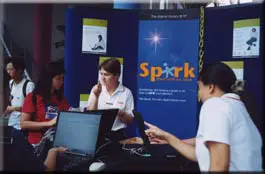
A week-long DL roadshow was held from 6-10 January at the Plaza and Engineering concourse areas to generate awareness on the DL and a new security feature for self-service loans in the Library.
- TP Library embarked on a major renovation project on 17 March 2003 to transform and update its image from being an academic resource provider to one which promotes life-long learning. The entire Level 3 was re-designed based on a lifestyle concept. Seminar rooms and reference counters were consolidated. [See TP Annual Report 2002-2003].
- In July, TP Library teamed up with the 8 local academic and special libraries to form the Plus8 Consortia with the objective of leveraging on group negotiations for better subscription deals on common electronic resources.
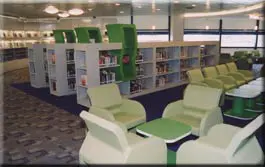
On 22 October, the Library re-opened its main entrance which was renovated to enhance access and traffic flow into the Library. The LifeStyle floor was opened to provide students and staff with the environment and resources for continuous learning beyond the scope of textbook education.
- In support of the polytechnic outreach to secondary schools, the Library provided basic research skills training and library orientation tours to secondary school students in the TP Exploration in Applied Science & Technology (TP-EAST) programme and Temasek Secondary School.
- eBooks were acquired by the Library in July and made accessible via the Research Gateway.
Temasek Polytechnic Library signed a Memorandum of Understanding with Singapore Integrated Library Automated Services (SILAS) on 19 February 2002.
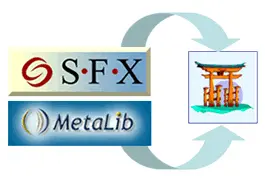
Migration from the 10-year old Dynix library system to a new library system, ALEPH 500, on 21 November. With the first Aleph installation in Singapore, the Library joined the league of established universities like M.I.T and Harvard with the concurrent implementation of Metalib (enabling simultaneous searches across a range of diverse resources) and SFX technology (providing context-sensitive links to resource-related services). [See TP Annual Report 2003-2004].
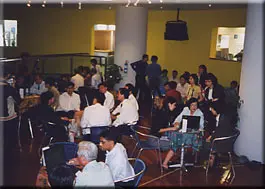
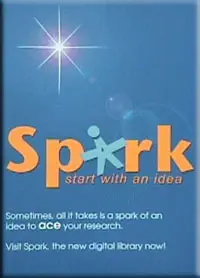
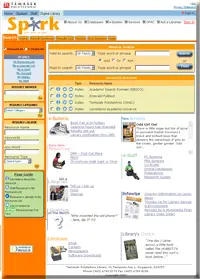
Launch of the TP Digital Library Portal, Spark, on 2nd December. With this portal, students and staff could access information and learning resources anywhere, anytime. [See TP Annual Report 2002-2003].
- Library awarded the TP Staff Suggestion Scheme Participation Award and the TP Work Improvement Teams Participation award for the third consecutive year.
- TP Digital Library System Project kicked-off in October 2001, with the goal to transform the TP Library into a high-tech, state of the art digital library, within the e-poly context [See TP Annual Report 2001-2002].
- Launch of Web-based self-booking system for library facilities such as Project Rooms, Presentation Rooms, Seminar Rooms, and Single Study Rooms.
- Patron Information made available online, allowing library members to renew items, make reservations, and check loan records and overdue fines either in the Library or remotely through the WebPAC.
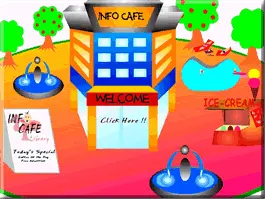
Launch of the "Who wants to be a Survivor" station graphical interfaces to entice students to explore InfoCafe (a virtual library guide) and Intelligent Island (an online interactive tutorial); both of which were used as self-paced learning tools or complements to classroom teaching.
Value-added service to the teaching staff - Library made special arrangements with MPH, Kinokuniya and TP Book Centre for teaching staff to select books at their convenience for inclusion in the Library collection.
Opening of level 5 & 8 as Discussion Floors in a pilot run in January to support the needs of both group and individual learning. The other levels were designated Quiet floors.
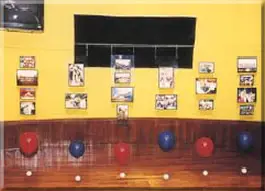
In conjunction with TP 10th Anniversary Celebrations, a Library exhibition titled "We are Ten: eMotions - celebrations of a decade" was set up at the Library Exhibition Hall. [See TP Annual Report 2000-2001]
Became one of the first libraries in Singapore to be awarded the ISO9001:2000 certification in December. The scope of the audit covered all Library sections and services. The Library was commended for its good preparedness and attitude to the Quality Management System, in demonstrating document control and for good qualifications, experience and authority of its staff. [See TP Annual Report 2000-2001].
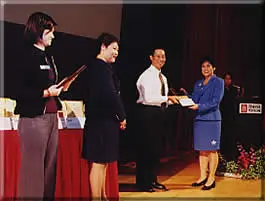
Library was the first recipient of the Temasek Quality Award, which was modelled along the Singapore Quality Award criteria.
- Recorded first over-million mark for visitations to the Library.
- Activated the self-services renewal function for further convenience to the library members. Loan renewals could now be done remotely through the WebPAC.
- Self-service kiosk set up at the Library foyer for students to facilitate booking of the project rooms, study rooms and presentation rooms. These facilities were in demand by students for individual and group study.

Intelligent Island Episode 2 was launched. Here, the hero Alex Smart encountered new adventures which included finding keywords to a given topic and putting into place elements of a citation.
- Library conducted its 4th Students’ Satisfaction Survey and started to put up posters on follow-up actions taken by the Library in response to students’ feedback and suggestions from previous year’s survey. The overall satisfaction rating of 95% was maintained.
- Centre for Individual Language Learning (CILL) moved out of the Library building, taking with them the CILL collection.
- Allocation of six PCs in the Library to access Reuters on-line financial and business information service.
- The tender for the installation and implementation of a CDROM networking and workstation access control and monitoring system was awarded.
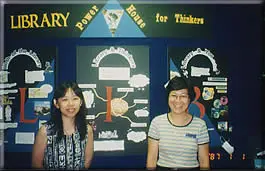
Major thematic display entitled “Library: Powerhouse for Thinkers” was mounted in conjunction with the TP Annual Staff Development Conference
Library was the first department to complete the process mapping and documentation of all the 77 core processes. The Library also submitted the highest work improvement project reports and has the highest Staff Suggestion Scheme contribution and participation.
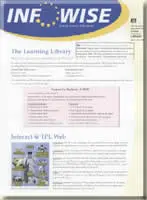
June 1998, launch of the first issue of InfoWise with the tagline "Search smart, not hard". A two-page newsletter. Also featured the new masthead as a result of change of name from Library News.
Launch of Past Exam Papers Online (PEPO) system. In addition to the printed past examination papers available in the Red Spot Collection, students were able to access past exam papers on-line from the Library Home Page as well as the TP OLE Home Page for the first time.
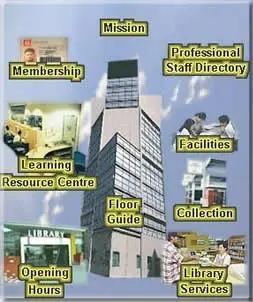
Launch of Library Internet web site to provide information on library policies, resources, services, membership, and search tips, as well as links to web sites relevant to the TP community.
- Launch of the Library Intranet, linked to the TP Staff Intranet, with the following information:
- Table of Contents
- Alert Service aimed at alerting staff to developments in their subject areas or areas of interest
- OPAC (now called the Library Catalogue) instructions
- electronic reference enquiry form
- Journal titles listing
- electronic journals.
- Provision of Electronic Library Guides on Levels 2,3, 6 and 9 to serve as additional navigational and information tools. Designed by two final-year IT students, and supervised by Library staff.
- Production of a 6-minute Library video, entitled A day in the life of the Library by Media Services Unit. Providing insight into the daily happenings in the Library and the total quality service which the Library provides with its front-line duties and behind the scene activities from 8am to 9pm.
- A Presentation Room was made available for all students Two project rooms were converted to a Training Room, for both staff and student user education activities. The room was equipped with 21 PCs.
- The Library participated in the Basic IT Skills (BITS) programme aimed at introducing desired information and IT life skills. The Library’s involvement was targetted at teaching basic research skills, including the effective use of search tools, OPAC (now called the Library Catalogue) and CD-ROM databases to retrieve information.
- Library’s first Annual Student Satisfaction Survey.
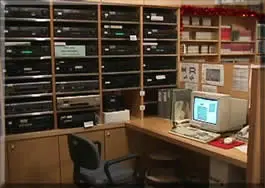
Launch of Video Commander System in July and a video screening booking system for efficient and speedy video services to the lecture theatres and classrooms. [See TP Annual Report 1996-1997]
- Participation in Tiara (Timely information for all, relevant and affordable) a multi-agency project led by the National Library Board and National Computer Board to bring information to the public.[See TP Annual Report 1996-1997]
- Extended opening hours started from July, in response to the increased need of staff and students, especially part-time students, to use the Library after office hours. [See TP Annual Report 1996-1997]
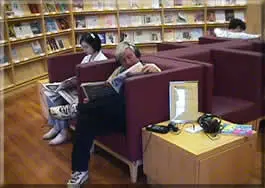
Setup of the Music Junctions at Levels 3, 6 and 9 of the Library. [See TP Annual Report 1996-1997]
Setup of the fifth satellite library at Portsdown Road Campus in March with seating capacity of 20 and resources on food science and nutrition.
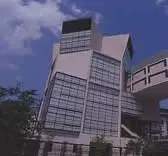
Consolidation of the 5 campus libraries to new library building at Tampines campus in August. The move took 2 weeks, one week for packing and loading onto 25 containers, and another week to unload and unpack at the Tampines Campus.[See TP Annual Report 1995-1996]
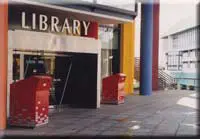
Despite outstanding building works and disruptions to operations, the Library opened its doors on 21 September, 3 days after the academic term officially began.
- Re-organisation of Reader Services into Reference & Information Services and User Services. Renaming of Media Resources Section to Learning Resource Centre.[See TP Annual Report 1995-1996]
- Electronic Library Guide (ELG) developed to enable users to familiarise themselves in new environment. ·Installation of 3M Self-check machines.
- Equipping LRC and the Microcomputer Resources Rooms on L3, 6 and 9 with PCs and Macintosh and Internet access.
- Setup of Bukit Merah Campus satellite library on 4 July with floor area of 70 square metres and seating capacity of 56.
- Set up of Local Area Network (LAN) at the Stirling Road, Kim Seng and Grange Road campus libraries.
- Introduction of two computer-based programmes for orientation -- a multimedia library guide and a tour program on Stirling Road Campus Library. [See TP Annual Report 1994-1995]
- Upgrading of Dynix system to version 135.2 and user licenses from 32 to 128.
- Workshops on CD-ROM databases and search techniques for students.
- Pilot project to build a networked multimedia database with first phase to index some slides, negatives and video clips.
- Participation in training of librarians under the Colombo Plan Training Award Programme. Two librarians from Myanmar were attached to the library and given briefings on library setup and automation.
With the largest Dynix installation in Singapore, TP Library became a member of the Meeting of the Asian Dynix Users (MADU), a regional Dynix Users’ group inaugurated in June 1993.
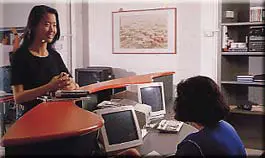
Set up of a Media Resources Section concurrently with Kim Seng Campus Library on 30 June, with seating capacity of 65. [See TP Annual Report 1993-1994].
- Availability of BBC news (via satellite), multimedia resources and facilities for library users at the Kim Seng Campus [See TP Annual Report 1993-1994].
- Use of Internet to send purchase orders. This is also the year when TP plugged onto the Internet and made Internet access available at desk of every staff member.
- Sending of overdue reminders and reservation notices via campus email system to staff. [See TP Annual Report 1993-1994].
- Campus link-up to SILAS established through IDNET, enabling the Library to download SILAS records directly to the Dynix system (without using diskette or tape). [See TP Annual Report 1992-1993]
- Online circulation module for the Reserve Book Collection implemented. As a result of this, from 16 April Loan Cards were no longer needed for borrowing books.
- Launch of first library orientation programme for students saw 800 students participating. [See TP Annual Report 1992-1993]

New masthead for TP Library News, was designed by Miss Pamphylia Poh of the Design School and launched in May/June issue. Besides reflecting the rich design collection of TP Library, the masthead also showed a moving away from the traditional, conventional image towards a more progressive "high-tech" image of the Library.
- Coordinated intake for the part-time Certificate in Library Studies. The programme was launched in July.
- Launch of 3 categories of membership – graduate, corporate and personal memberships.
- First stocktake exercise conducted in December. It took 11 days.
- Setup of a media resources section in October to handle growing demands for AV materials and computer software for teaching and learning.
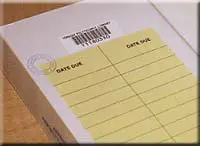
Start of barcoding of the library collection from March, in preparation for library services computerisation.
- Implementation of the Cataloguing module followed by the Circulation and Online Public Access Catalogue (OPAC)(now called the Library Catalogue) modules in July. The Acquisitions module was implemented next in August. The full Library Automation programme was completed in December, a record time of 10 months. [See TP Annual Report 1991-1992]
- Addition of another reading room at GRC library, extending the seating capacity to 156.
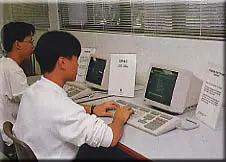
OPAC (now called the Library Catalogue) terminals installed at both campus libraries. A touch-screen terminal, the first of its kind in a Singapore library, was installed in the GRC Library. [See TP Annual Report 1991-1992]
Book return bins installed outside premises of both campus libraries to facilitate book returns by staff and students.
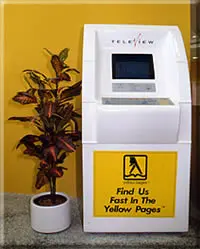
Teleview, an electronic videotext system, was installed in GRC Library in October to enable users to access various types of information including financial, education and travel news.
Opening of Stirling Road Campus library on 26 July, with seating capacity for 80 users and floor area of 279 sq metres.
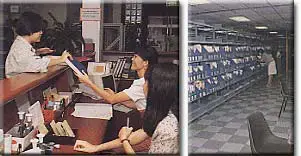
Opening of Grange Road Campus library on 20 August, with seating capacity for 120 users, and floor area of 491 sq metres.
First self-service photocopying machine made available on the Grange Road Campus Library premises.
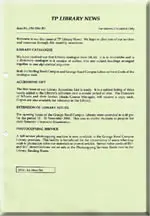
First issue of TP Library News in November. This first library publication started out as a monthly newsletter with just 1 page of information on services and resources.
- First library catalogue received from SILAS. A dictionary catalogue in microfiche format, it consisted of author, title and subject headings arranged together in one alphabetical sequence.
- The first issue of our Library Accessions List. It was a subject listing of titles newly added to the Library’s collection over a certain period of time.
- Tender evaluation for a computerised library system, resulting in the selection of the Dynix Automated Library System. [See TP Annual Report 1990-1991]
- Library collection size : 11,080 vols of books, 139 AV titles. [See TP Annual Report 1990-1991]
.webp)
